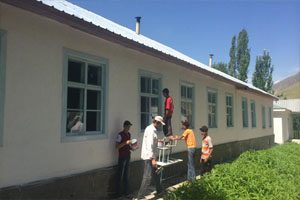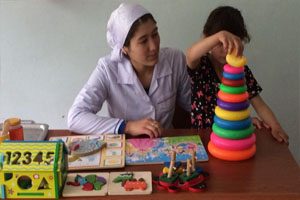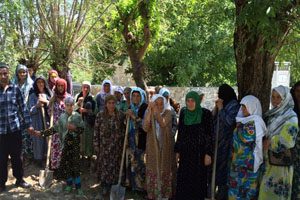
Tajikistan
Region: Asia and the Pacific
-

Duration: July 2013 - December 2016
Budget: US$3,940,894
Implementing Agencies: UNDP (lead), UNICEF, WFP, UN Women, UNFPA
Once a thriving agricultural zone, the people of Tajikistan’s Rasht Valley face a number of insecurities that together impact their daily survival, livelihood and dignity. Among these, deterioration of the agricultural infrastructure following the political transition and conflict in the 1990s has led to a dramatic reduction in the region’s productivity and food security. In addition, prospects for economic revitalization and investment in infrastructure are often curtailed by persistent outbreaks of localized conflict and the impact of instability in neighbouring Afghanistan.MORE -

Duration: May 2007 - June 2010
Budget: US$1,095,038
Implementing Agencies: ILO, UNDP
The programme’s overall goal was to strengthen the human security situation in Tajikistan’s Rasht Valley, with particular emphasis placed on improving the socio-economic and personal security needs of people in transit and female-headed households without income opportunities.MORE -

Duration: March 2004 - September 2007
Budget: US$181,259
Implementing Agencies: UNDP
The programme intended to improve the healthcare sector in Tajikistan by training physicians, nurses and midwives in their specialized fields, and by strengthening the institutional capacity of health facilities in the target areas.MORE -

Duration: May 2002 - March 2004
Budget: US$1,155,590
Implementing Agencies: UNICEF
The programme sought to prevent water-borne and hygiene-related diseases by providing clean drinking water to schools and health institutions in addition to educational seminars on important hygienic practices.MORE -

Duration: November 2000 - June 2003
Budget: US$676,641
Implementing Agencies: UNDP
To reassure that the needs of ex-combatants were addressed and to prevent them from turning to criminality to support themselves and their families, the programme aimed to create jobs for ex-combatants, improve local infrastructure, expand livelihoods, and facilitate commerce, transportation and communication between communities.MORE
